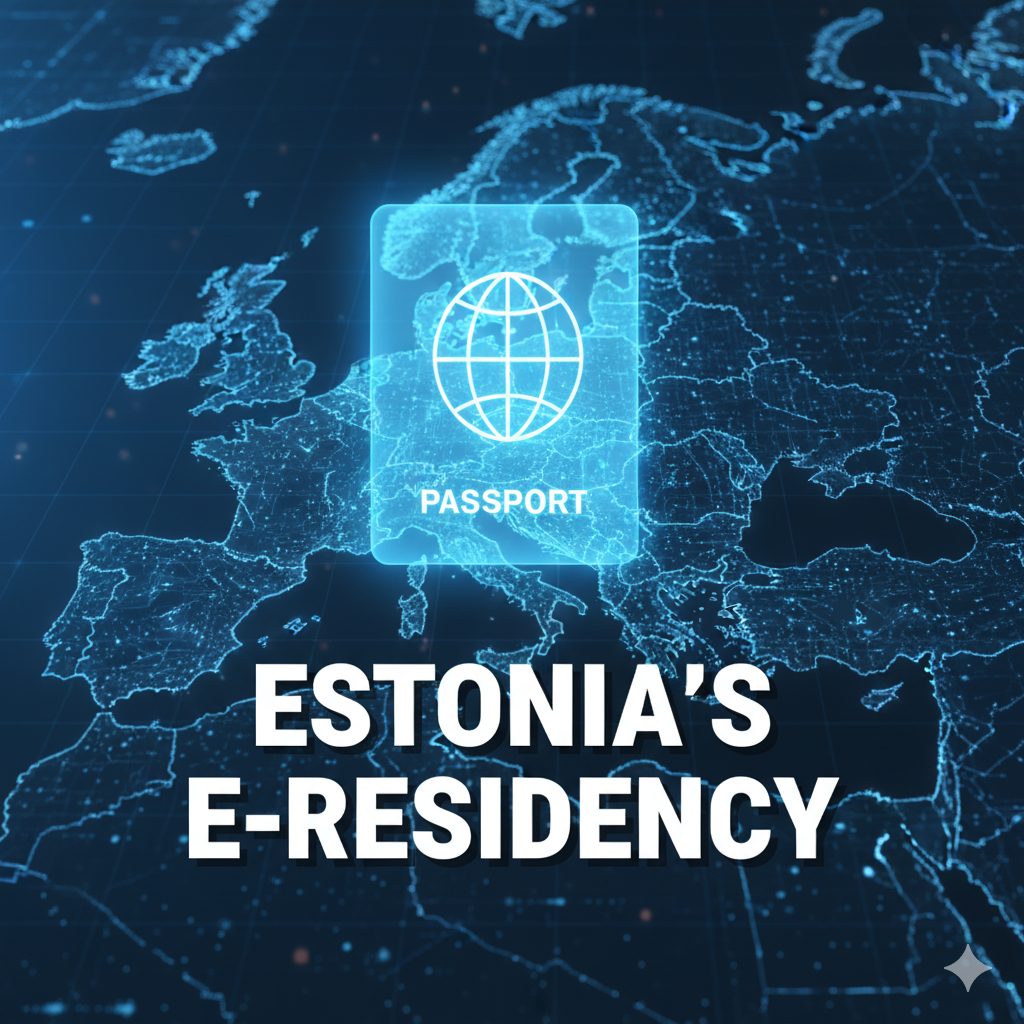Estonia’s e-Residency: The World’s First Digital Nation Without Borders
Estonia’s e-Residency turns the idea of citizenship into a digital service. Anyone, anywhere can start & manage an EU business online, backed by state-level security. Here’s how this experiment in borderless governance works — and what to watch out for.

The Birth of a Digital Nation
In December 2014, Estonia — a country of just 1.3 million people — made global headlines. It became the first nation to offer e-Residency, a government-backed digital identity that allows anyone in the world to establish a company inside the European Union, fully online.
This bold idea emerged from Estonia’s two-decade journey in digital governance. After regaining independence from the Soviet Union in 1991, the nation invested heavily in building an electronic state from the ground up. By the early 2000s, citizens could vote online, access healthcare digitally, & sign legally binding documents using secure e-signatures.
The next logical step was borderless inclusion — extending Estonia’s digital state to the world.
How e-Residency Works
Applying for e-Residency is straightforward but secure.
- You apply online via the official portal (e-resident.gov.ee).
- Submit a passport copy, photo, & motivation statement.
- Pay a government fee of €100–€120, depending on the pickup point.
- Undergo background checks by the Estonian Police & Border Guard Board, including Interpol & Europol databases.
- Upon approval, collect your digital ID card from an embassy or service center.
Once activated, the card enables encrypted authentication & digital signatures across the Estonian e-governance ecosystem. It gives access to services such as company registration, accounting, taxation, and banking.
The entire infrastructure runs on X-Road, Estonia’s secure data exchange layer, which links public & private databases while keeping every transaction traceable — ensuring trust without borders.
What e-Residents Can Do
e-Residents can:
- Start & run an Estonian private limited company (OÜ) remotely.
- Sign documents & contracts digitally recognized under EU law.
- File taxes & reports online through Estonia’s digital portal.
- Access EU payment systems via fintech partners like Wise, Payoneer, or LHV Bank.
- Collaborate globally under a legal European business entity.
These privileges have turned Estonia into a launchpad for digital entrepreneurs, particularly from India, Ukraine, and Latin America — offering EU credibility without relocation.
Who It’s For
- Freelancers & remote workers seeking EU invoicing & contracts.
- Startups & digital service providers targeting EU clients.
- Small global firms wanting easy compliance & low overheads.
- Consultants or e-commerce sellers who want to separate personal & business operations.
For many, e-Residency is not just about convenience — it’s about legitimacy, access, and scale in global markets.
Key Numbers
- Over 100,000 e-Residents from 180+ countries (as of 2025).
- More than 25,000 companies created.
- Around €150 million in economic impact for Estonia.
- Top applicant countries: Finland, Germany, India, Russia, Ukraine.
- Over 70 pickup locations worldwide.
Taxation & Compliance
e-Residency doesn’t mean tax-free business. Estonia uses a unique 0% corporate tax on retained profits, meaning companies only pay 20% when profits are distributed as dividends.
However:
- e-Residents must still comply with their home country’s tax laws.
- If management & operations happen outside Estonia, your home country may treat it as locally taxable.
- Accounting & annual reporting are mandatory, with licensed Estonian accountants charging roughly €60–€150 per month.
Failure to comply can result in fines from €200 to €3,000 or company suspension.
Limitations & Legal Realities
- e-Residency ≠ citizenship, residence, or visa rights.
- The digital ID cannot be used for travel or national voting.
- Some traditional banks may reject non-EU applicants due to AML/KYC restrictions.
- It’s not a way to avoid taxes — authorities in both Estonia & your home country may cross-check data.
After 2020, Estonia tightened verification due to misuse risks, including suspected shell-company activity. Stronger KYC, cross-border data cooperation, and new e-Residency 2.0 standards (2021) have since stabilized the ecosystem.
Milestones
- 2014: e-Residency officially launched.
- 2018: First major update with new application portal.
- 2019: 50,000 e-Residents milestone.
- 2021: “e-Residency 2.0” introduced — stronger security, better service integrations.
- 2023: Expansion into Asia — new pickup centers in India, Singapore, Japan.
- 2025: Over 100,000 global e-Residents managing EU companies remotely.
Why It Matters
Estonia’s e-Residency has redefined the role of the state. It shows that citizenship and governance can be unbundled — that you don’t need to live in a country to use its services.
In a world of borderless work & remote business, Estonia’s model demonstrates how small nations can leverage trust, technology, and transparency to create global influence.
It’s not perfect — but it’s a blueprint for the next generation of digital governance.
What to Watch
- Expansion into Web3 identity & blockchain-linked company management.
- EU regulatory updates on cross-border taxation & digital identity.
- New partnerships with fintech providers for global entrepreneurs.
- Potential geopolitical scrutiny over digital residency programs.
Conclusion
Estonia’s e-Residency isn’t just a tech innovation — it’s a governance revolution. It breaks the link between geography & opportunity, enabling a world where business borders are optional.
Yet with power comes responsibility. For entrepreneurs, understanding compliance, taxation, & banking realities is key. For nations, Estonia’s experiment asks a deeper question:
Can digital trust replace physical presence in the 21st century?
If the answer is yes, the world’s first borderless nation was born a decade ago — and its name is Estonia.

Harsh Gupta is an international strategist helping entrepreneurs and investors legally minimize taxes, protect assets and build freedom through second residencies, passports and offshore banking—having guided hundreds of clients across EU, North America and Asia toward global mobility and long-term asset protection.